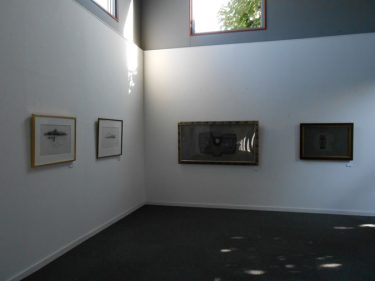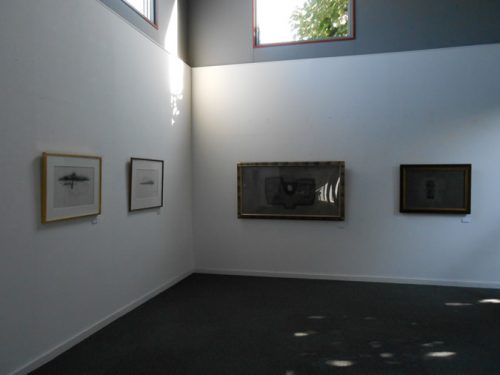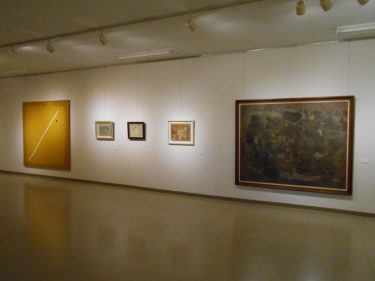このブログでは、子供の頃、美術の授業が好きだった方(もちろん、苦手だった方も)
美術館には行くけど、ギャラリーには行ったことがない方
家に絵画や作品を掛けてみたいけど、どうしたらいいか分からない方に向けて、
現代アートをお家で楽しむには、どうしたらいいかをご紹介していきます。
今回、すどう美術館の須藤一郎館長からご協力いただき「すどう美術館 館長のひとりごと」を掲載致します。
絵のある暮らし
海外の美術館に行くと、先生が生徒をたくさん連れてきて、会場の一隅に座らせ、一生懸命絵の説明をしている場面に出会います。しかし、今でも日本では先生に美術についての関心が薄いこと、それに外へ連れ出して事故でもあったらたいへんだと思うことなどから、めったに見られない風景です。
欧米では小さい時からそんな風に学校で美術の教育を受けており、家に帰れば両親が集めた個性的な絵が所狭しと飾ってあって、アートについて身体で覚えさせられ、自然に馴染んでいるのです。ですから、日本の場合、相当の知識人でも「絵はわからない」という人が多いのですが、欧米の人たちには絵がわからないという言い方はありません。
以前聞いた話ですが、ヨーロッパでは子どもが結婚するときに、その親が自分のコレクションの中から一番気に入った作品をお祝いにプレゼントするのだそうです。子ども夫婦はそれをもとに自分のコレクションを始め、自分の子どもが生まれ、結婚するときにまた、コレクションの中から作品を選び贈るのです。
そのようにして、代々、それぞれの家族が絵を集め飾っていくわけです。
とても羨ましいことではありませんか。
日本でも小さい時から、美術的なものについての環境がもっと、もっと整い、充実していくことが重要であって、時間がかかることかもしれませんが、みんなで努力して、そんな社会を作っていかなければならないと思います。
それにはまず、一点好きな絵を選び、掛けることから始めればよいのです。
身近に一点絵があることがその家族にとって、どんなに潤いにつながるかわかりません。そして、それがきっかけになり、だんだん絵が増えてきて絵のある暮らしの楽しさ、大事さがわかってくるのです。
すどう美術館 館長 須藤一郎
美術の成績は不必要
館長が文章を寄せてくれた際、このようなやり取りがあった。
“コメントについて一つだけお願いがあります。
私は小さいころ美術の授業が苦手でずっとコンプレックスを持っていました。今でもです。
それで、出だしのところ、もし次のように付け加えができましたら、と思います。
「このブログでは子どもの頃、美術の授業が好きだった方(もちろん、苦手だった方も)」
よろしくお願いします。“
その時ハッとした。私自身がずっと美術が好きで、絵を描くことも見る事も好きだったので気が付かなかった。美術が苦手でも、嫌いではないのだと。
日本の教育において、美術の評価は見た目の割合が大きい。何を表現しているかより、何を写し取ったかと思わざるを得ない。もちろん得意不得意があり、キレイに描くことに重きを置くあまり、委縮してしまう。
美術の成績を付けることは自分自身を表現すること、人の表現を感じる事を、苦手意識によって遠ざけてしまう。
それは、表現の根底とは違う方向を向いてしまっている。
点数を付けずに出来る事はたくさんある。自己表現、他己表現を認め合い、ディスカッションするだけでも有意義だ。言葉にすることが苦手な場合は、ディスカッションしなくていい。静かに、その子の中にある表現を見守ればいい。
表現というものを知る上でも、たくさんの作品を見る機会を作りたい。描くことのハードルは高いが、見る、感じる事のハードルは低い。ただ、作品の前に行けばいいのだ。
教科書にある作品をいくら見ても感動は薄い。実物に触れることで感動は生まれる。有名な作品でなくていいのだ、プリントアウトされた物ではない作品を見てほしい。
最後まで読んでいただき、ありがとうございました。
作品との良い出会いを!
DEア ートでした。
協力:写真引用元:すどう美術館

[ Gallery SUDOH director’s monologue ]Part 5 ‟Life with Pictures .”
This blog is for those who loved art classes when they were kids. (Of course, if you weren’t good at it…)
If you go to museums but have never been to a gallery.
For those of you who want to hang paintings and artworks in your home, but don’t know how to go about it.
Here are some tips on how to enjoy contemporary art at home.
This time, with the cooperation of Ichiro Sudo, Director of Gallery SUDOH, I will be posting [ Gallery SUDOH director’s monologue ] .
Life with Pictures
When you go to a museum overseas, you will encounter a scene where a teacher brings a lot of students to sit in a corner of the exhibition hall and does his best to explain about the paintings.
However, even now in Japan, this is a rare sight because teachers have little interest in art, and they are afraid of having an accident if they take their students outside.
In Europe and the U.S., people receive art education at school from a young age, and when they come home, they see their parents’ collection of unique paintings displayed everywhere, and they are made to learn about art through their bodies and become familiar with it naturally.
Therefore, in Japan, even many intellectuals say, “I don’t understand art,” but in the West, there is no such thing as “I don’t understand art.
I heard once that in Europe, when a child gets married, the parents give him or her a piece from their collection that they like best as a gift.
The child and his or her parents would then start their own collection, and when their own child was born and married, they would again choose a piece from their collection to give as a gift.
In this way, from generation to generation, each family collects and decorates their own paintings.
Isn’t that a very enviable thing?
In Japan, it is important to create a better environment for art from a young age. It may take time, but I think we all need to make an effort to create such a society.
To do this, all you have to do is to choose one painting that you like and hang it up.
I can’t tell you how enriching it is for a family to have a single painting around them. This is the beginning of the process of increasing the number of pictures and understanding the joy and importance of living with pictures.
In Japanese education, the evaluation of art is largely based on appearance. We are forced to think of what we have copied rather than what we have expressed. Of course, there are strengths and weaknesses, and the emphasis on drawing beautifully leads to attrition.
Ichiro Sudoh
Art grades are not required.
When the director sent me the text, we had this exchange.
“I would like to ask one thing about your comment.
I was never good at art class when I was little and I always had a complex about it. I still am.
So, at the outset, if you could add the following, I would appreciate it.
“This blog is for those of you who loved (and of course, hated) art class as a child.”
Thank you very much. “
That’s when it hit me. I hadn’t realized it because I had always loved art myself, loved to draw and look at it. Even though you was not good at art, you did not hate it.
Grading art keeps students from expressing themselves and feeling the expressions of others because they are not good at it.
It has taken a different direction from the basis of expression.
There are many things that can be done without assigning a score. Just acknowledging and discussing self-expression and other self-expression can be meaningful.
If the child is not good at verbalizing, there is no need to discuss it. Just be quiet and watch the child express himself/herself.
I would like to create opportunities to see many works of art in order to learn about expression. The hurdle to painting is high, but the hurdle to seeing and feeling is low. All you have to do is go in front of the work.
No matter how many works you see in a textbook, you will not be impressed. Touching the real thing is the only way to be moved.
It doesn’t have to be a famous work of art, but a work of art that is not a printout.
Thank you for reading to the end.
Have a good encounter with a work!
This was DE art.
Cooperation:Photo reference:Gallery SUDOH
Translated with www.DeepL.com/Translator (free version)


